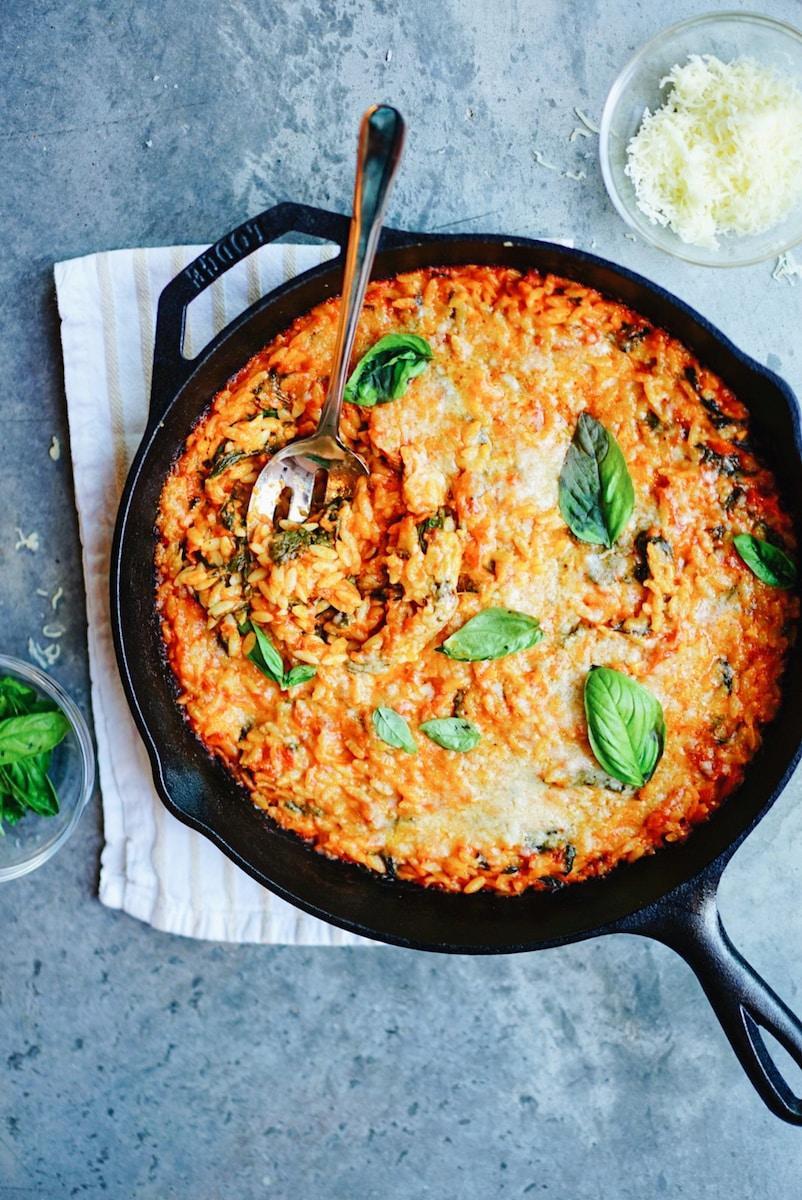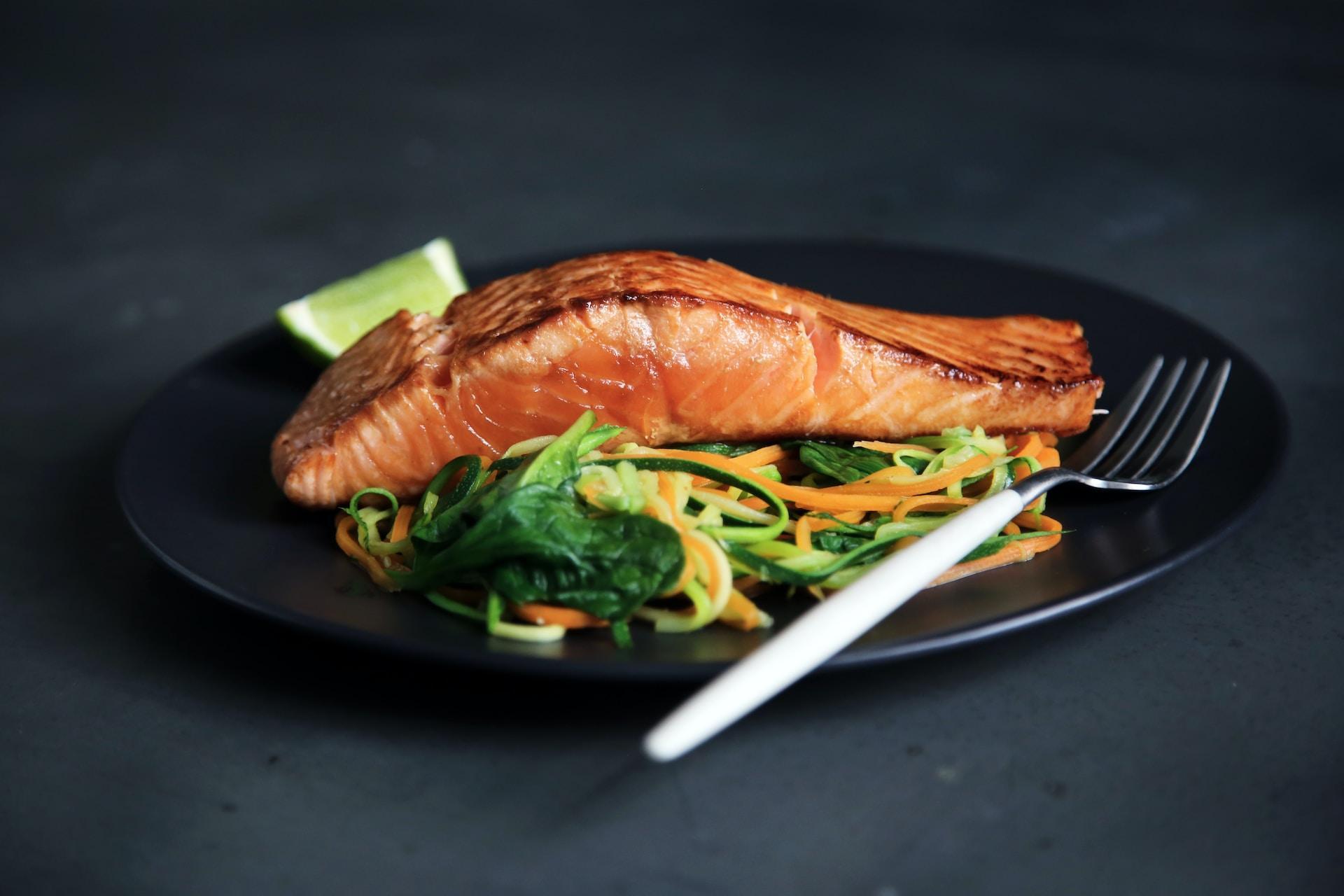Pad Thai Noodle Recipe is a popular Thai dish recipe that has gained immense popularity worldwide. The dish is a perfect blend of sweet, sour, and savory flavors, making it a favorite among food enthusiasts. The dish’s main ingredient is rice noodles, which are stir-fried with vegetables, protein, and a tangy sauce.
Traditional Pad Thai Noodle is a complex recipe that requires a lot of skill and practice to perfect. The dish’s authentic version uses tamarind paste to give it a sour taste, palm sugar for sweetness, and fish sauce for saltiness. The recipe also calls for a variety of vegetables, including bean sprouts, green onions, and garlic chives, which add texture and flavor to the dish.
In this article, we will explore the traditional Pad Thai noodle recipe, its history, and the ingredients used to make it. We will also provide step-by-step instructions on how to make the dish, along with tips and tricks to make it taste authentic. Whether you are a seasoned cook or a beginner, this article will help you make the perfect Pad Thai that will impress your family and friends.
Contents
Ingredients
Pad Thai Noodle is a traditional Thai dish that has gained popularity worldwide. It is a stir-fried noodle dish that is typically made with rice noodles, vegetables, protein, and a flavorful sauce. The following section will outline the key ingredients needed to make a delicious and authentic Pad Thai dish.
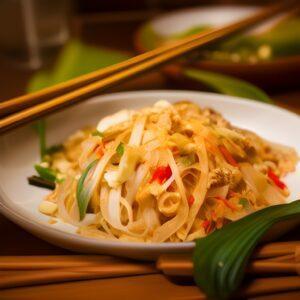
Sauce
The sauce is a crucial component of the Pad Thai dish, as it provides the dish with its unique flavor profile. The sauce is typically made with a combination of sweet, salty, sour, and spicy flavors. The following are the key ingredients used to make the Pad Thai sauce:
- Soy sauce: Soy sauce is a staple ingredient in many Asian cuisines. It is a salty and savory sauce that is made from fermented soybeans. It adds depth of flavor to the Pad Thai sauce.
- Peanut butter: Peanut butter is a creamy and nutty ingredient that is used to add richness and flavor to the Pad Thai sauce. It also helps to thicken the sauce.
- Coconut amino: Coconut amino is a soy sauce alternative that is made from coconut sap. It is a gluten-free and soy-free option that adds a sweet and savory flavor to the Pad Thai sauce.
- Maple syrup: Maple syrup is a natural sweetener that is used to balance the salty and sour flavors of the Pad Thai sauce. It adds a subtle sweetness to the dish.
- Rice wine vinegar: Rice wine vinegar is a mild and slightly sweet vinegar that is made from fermented rice. It adds a tangy flavor to the Pad Thai sauce.
Noodles
The noodles are the foundation of the Pad Thai Noodle dish. They are typically made with rice noodles, which are thin and translucent noodles that are made from rice flour. The following are the key ingredients used to make the Pad Thai noodles:
- Rice noodles: Rice noodles are the primary ingredient in the Pad Thai dish. They are delicate and have a slightly chewy texture. They absorb the flavors of the sauce and other ingredients.
- Protein: The protein used in the Pad Thai dish can vary, but it is typically either shrimp or chicken. The protein is cooked separately and then added to the dish at the end.
- Vegetables: The vegetables used in the Pad Thai dish can also vary, but they typically include bean sprouts, green onions, and carrots. These vegetables add crunch and texture to the dish.
In conclusion, the Pad Thai Noodle dish is a delicious and flavorful dish that is easy to make at home. The key ingredients needed to make an authentic Pad Thai dish include rice noodles, protein, vegetables, and a flavorful sauce made with soy sauce, peanut butter, coconut amino, maple syrup, and rice wine vinegar.
Vegetables
Pad Thai Noodles is a classic Thai dish that is known for its delicious blend of flavors and textures. One of the key components of this dish is the vegetables that are used. In this section, we will discuss the vegetables that are commonly used in traditional Pad Thai recipes.
Preparation
Before we dive into the specific vegetables used in Pad Thai, let’s talk about preparation. It’s important to prepare all of your vegetables before you start cooking. This means washing, peeling, and chopping them into bite-sized pieces. This will save you time and stress while you’re cooking.
Red Peppers
Red peppers are a colorful and flavorful addition to Pad Thai. They add a slight sweetness and crunch to the dish. To prepare red peppers for Pad Thai, wash them and remove the seeds and stem. Then, slice the pepper into thin strips.
Carrots
Carrots are another vegetable that adds color and crunch to Pad Thai. To prepare carrots for Pad Thai, wash them and peel them. Then, slice them into thin rounds or julienne them into thin strips.
White Onion
White onions are a staple in many Thai dishes, including Pad Thai. They add a pungent flavor to the dish. To prepare white onions for Pad Thai, peel them and slice them into thin strips.
Garlic
Garlic is a key ingredient in many Thai dishes, and Pad Thai is no exception. It adds a strong, pungent flavor to the dish. To prepare garlic for Pad Thai, peel the cloves and finely chop them.
Purple Cabbage
Purple cabbage is a colorful addition to Pad Thai. It adds a slightly sweet and crunchy texture to the dish. To prepare purple cabbage for Pad Thai, wash it and slice it into thin strips.
In conclusion, the vegetables used in Pad Thai add a variety of flavors and textures to the dish. By preparing them ahead of time and incorporating them into the dish at the right time, you can create a delicious and authentic Pad Thai Noodles.
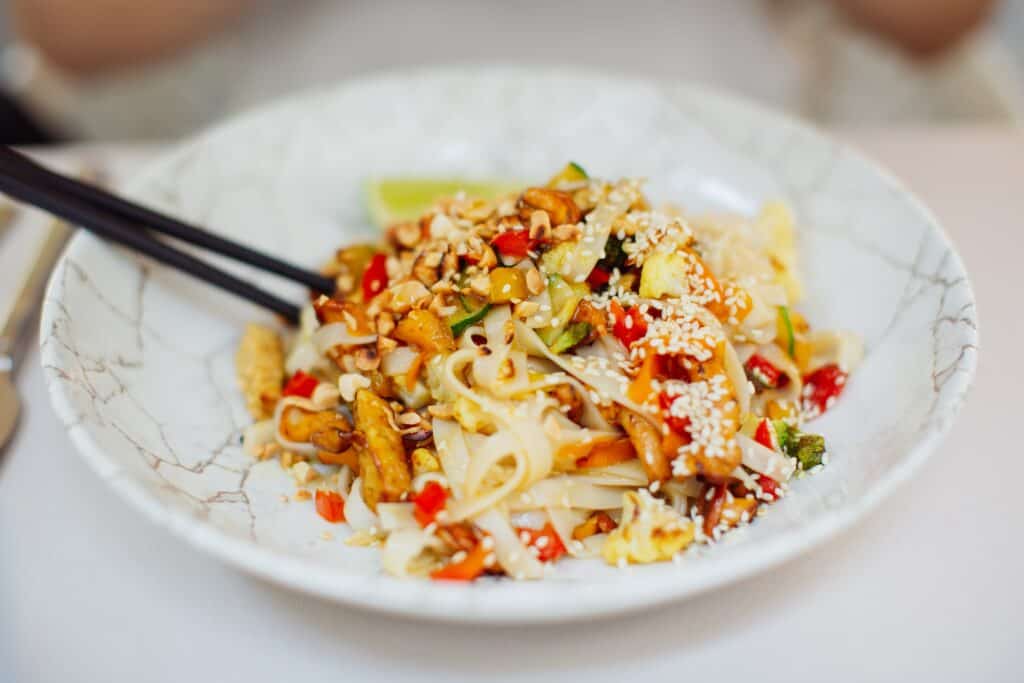
Cooking the Noodles
Cooking the noodles for Pad Thai is a crucial step that can make or break the dish. Traditional Pad Thai noodles are made from rice flour and are called linguine rice noodles. These noodles are delicate and require proper handling to prevent them from becoming mushy or sticking together.
To cook the noodles, start by bringing a large pot of water to a rolling boil. Add the noodles to the boiling water and stir gently to prevent them from clumping. Cook the noodles for 3-5 minutes or until they are tender but still firm to the bite. Drain the noodles and rinse them under cold water to stop the cooking process and remove excess starch.
To prevent the noodles from sticking together, toss them with a little oil or cooking spray. You can also add a tablespoon of vinegar to the cooking water to help keep the noodles separate.
When cooking Pad Thai, it’s important to have all the ingredients ready before you start cooking the noodles. This is because the noodles cook quickly, and you don’t want to overcook them while you’re preparing the other ingredients.
To add flavor to the noodles, you can soak them in a mixture of tamarind paste, fish sauce, and sugar before cooking. This will give the noodles a tangy and savory flavor that pairs well with the other ingredients in the dish.
In summary, cooking the noodles for Pad Thai requires proper handling and preparation to ensure they are tender but not mushy. Make sure to have all the ingredients ready before starting to cook the noodles, and consider soaking them in a flavorful mixture before cooking for added taste.
Making the Pad Thai Sauce
The Pad Thai sauce is a crucial element in traditional Pad Thai noodle recipe. It is what gives the dish its signature sweet, sour, and savory flavor. Making the sauce is relatively easy and requires only a few simple ingredients. In this section, we will go over how to make the Pad Thai sauce step by step.
Ingredients
To make the Pad Thai sauce, you will need the following ingredients:
- 1/4 cup neutral oil
- 2 cloves garlic, minced
- 3 tablespoons rice wine vinegar
- 3 tablespoons soy sauce
- 2 tablespoons peanut butter
- 2 tablespoons maple syrup
- 1/4 teaspoon crushed red pepper
Instructions
- In a small saucepan, heat the neutral oil over medium heat. Once heated, add the minced garlic and sauté for 30 seconds until fragrant.
- Add the rice wine vinegar, soy sauce, peanut butter, and maple syrup to the saucepan. Stir until the peanut butter has melted and the ingredients are well combined.
- Add the crushed red pepper and stir to combine.
- Reduce the heat to low and let the sauce simmer for 5 minutes, stirring occasionally.
That’s it! Your Pad Thai sauce is ready to use. It’s important to note that the sauce can be made ahead of time and stored in the refrigerator for up to a week. Simply reheat the sauce in a saucepan over low heat before adding it to your Pad Thai noodles.
Tips
- Use a neutral oil like vegetable or canola oil to avoid overpowering the other flavors in the sauce.
- If you don’t have rice wine vinegar, you can substitute it with white vinegar or apple cider vinegar.
- Adjust the amount of crushed red pepper to your desired level of spiciness.
- For a smoother sauce, use a blender or food processor to puree the ingredients together before heating them in the saucepan.
In conclusion, making the Pad Thai sauce is an easy and essential step in creating a delicious traditional Pad Thai noodle dish. With the right ingredients and a little bit of patience, you can create a sauce that perfectly balances sweet, sour, and savory flavors.
Stir-frying the Vegetables
One of the essential steps in making traditional Pad Thai is stir-frying the vegetables. This process involves cooking the vegetables over high heat for a short time to retain their crispiness and nutrients. Here’s how to do it:
Ingredients
Before we start, let’s gather the ingredients we need for the stir-fry:
- Neutral oil (such as vegetable or canola oil)
- Red peppers
- Carrots
- White onion
- Garlic
- Purple cabbage
Preparation
First, we need to prepare the vegetables for stir-frying. Here’s how:
- Wash the vegetables thoroughly and pat them dry.
- Cut the red peppers into thin strips.
- Peel and slice the carrots into thin rounds.
- Cut the white onion into thin slices.
- Mince the garlic.
- Shred the purple cabbage.
Stir-frying
Now that we have our ingredients ready, let’s start stir-frying:
- Heat a wok or a large skillet over high heat.
- Add 2-3 tablespoons of neutral oil to the wok and swirl it around to coat the surface.
- Add the minced garlic and stir-fry for a few seconds until fragrant.
- Add the sliced white onion and stir-fry for 1-2 minutes until translucent.
- Add the sliced red peppers and stir-fry for 1-2 minutes until slightly softened.
- Add the sliced carrots and stir-fry for 1-2 minutes until slightly softened.
- Add the shredded purple cabbage and stir-fry for 1-2 minutes until slightly softened.
- Continue stir-frying for another 1-2 minutes until the vegetables are cooked but still retain their crispiness.
Tips
Here are some tips to keep in mind when stir-frying vegetables for Pad Thai:
- Use a neutral oil with a high smoke point, such as vegetable or canola oil, to avoid burning the vegetables.
- Stir-fry the vegetables in batches if your wok or skillet is not large enough to accommodate them all at once.
- Do not overcook the vegetables, as they will lose their crispiness and become mushy.
- Add salt and pepper to taste, but be careful not to over-season the vegetables, as the Pad Thai sauce is already quite flavorful.
By following these simple steps, you can stir-fry the vegetables for your traditional Pad Thai noodle recipe with ease.
Combining the Noodles and Vegetables
Now that the noodles and vegetables are cooked, it’s time to combine them to create the classic Pad Thai dish. This step is crucial to ensure that all the flavors and textures are evenly distributed throughout the dish.
First, heat up a large skillet or wok over high heat. Add a tablespoon of oil and swirl to coat the bottom of the pan. Once the oil is hot, add the cooked linguine rice noodles and stir-fry for a minute or two until they’re heated through.
Next, add the cooked vegetables to the pan and stir-fry for another minute or two until they’re heated through as well. Make sure to stir constantly to prevent the noodles from sticking to the pan.
Now it’s time to add the sauce. Pour the prepared Pad Thai sauce over the noodles and vegetables, and stir everything together until the sauce is evenly distributed. Keep stirring for a minute or two until the sauce thickens slightly and coats everything in the pan.
If you’re using any protein such as shrimp or tofu, now is the time to add it to the pan. Simply push the noodles and vegetables to one side of the pan and add the protein to the other side. Stir-fry the protein for a minute or two until it’s heated through, then mix everything together in the pan.
Once everything is combined, turn off the heat and transfer the Pad Thai to a serving dish. Garnish with chopped peanuts, fresh cilantro, and lime wedges, and serve immediately.
In conclusion, combining the noodles and vegetables is the final step in making a delicious Pad Thai dish. With a little bit of stir-frying and sauce mixing, you can create a flavorful and satisfying meal that’s sure to please everyone at the dinner table.
Garnishing and Serving
Garnishing and serving Pad Thai is just as important as cooking it. It’s the final touch that brings out the dish’s flavors and makes it look more appetizing. Here are some tips on how to garnish and serve Pad Thai:
Crushed Peanuts
Crushed peanuts are a classic garnish for Pad Thai. They add a crunchy texture and nutty flavor to the dish. To crush peanuts, place them in a plastic bag and use a rolling pin to crush them into small pieces. Alternatively, you can use a food processor or blender to chop the peanuts.
When serving Pad Thai, sprinkle the crushed peanuts over the top of the dish. You can also place a small bowl of crushed peanuts on the side, allowing diners to add more as desired.
Green Onions
Green onions are another popular garnish for Pad Thai. They add a fresh, oniony flavor and a pop of color to the dish. To prepare green onions, slice them thinly on the diagonal.
When serving Pad Thai, scatter the sliced green onions over the top of the dish. You can also place a small bowl of sliced green onions on the side, allowing diners to add more as desired.
Other Garnishes
While crushed peanuts and green onions are the most common garnishes for Pad Thai, there are many other options to choose from. Here are some other garnishes you might consider:
- Bean sprouts: Bean sprouts add a fresh, crunchy texture to Pad Thai.
- Lime wedges: Squeezing fresh lime juice over Pad Thai adds a bright, tangy flavor.
- Cilantro: Chopped cilantro adds a fresh, herbaceous flavor to Pad Thai.
- Red pepper flakes: For those who like a bit of heat, red pepper flakes can be sprinkled over Pad Thai.
Serving Suggestions
When serving Pad Thai, there are a few things to keep in mind:
- Serve hot: Pad Thai is best served hot, so make sure it’s served immediately after cooking.
- Use the right dish: Pad Thai is traditionally served in a shallow bowl or plate. This allows diners to mix the ingredients together easily.
- Provide utensils: Pad Thai is typically eaten with chopsticks or a fork and spoon. Make sure to provide these utensils for your diners.
- Offer condiments: Some diners may want to customize their Pad Thai with additional condiments. Offer soy sauce, fish sauce, or hot sauce on the side.
With these tips, you’ll be able to garnish and serve Pad Thai like a pro. Remember, the garnishes and serving suggestions are just suggestions, so feel free to get creative and make Pad Thai your own.
Variations
Pad Thai is a versatile dish that can be customized to suit your taste preferences. Here are a few variations of the traditional Pad Thai recipe that you can try:
Creamy Pad Thai
If you love creamy sauces, then you’ll love this variation of Pad Thai. To make this dish, you’ll need to make a creamy peanut sauce using peanut butter, soy sauce, sriracha, rice wine vinegar, and lime juice. Then, sauté onions and garlic in a pan with some oil, add some sliced peppers, cabbage, and carrots, and cook for a few minutes. Next, add the cooked rice noodles and the peanut sauce to the pan with the vegetables and mix well. Finally, take the pan off the heat and divide the Pad Thai into bowls.
Spicier Noodle Dish
If you like your food to have a bit of a kick, then this spicier version of Pad Thai is perfect for you. To make this dish, you’ll need to add some extra heat to the traditional Pad Thai recipe. You can do this by adding more chili flakes or sriracha to the dish. You can also add some sliced jalapenos or Thai bird’s eye chilies to the pan with the vegetables to make the dish even spicier.
Using Leftovers
If you have some leftover vegetables or protein in your fridge, then you can easily incorporate them into a Pad Thai dish. You can use leftover chicken, beef, shrimp, or tofu, and add it to the pan with the vegetables. You can also add any leftover vegetables, such as broccoli, bell peppers, or carrots, to the dish. This is a great way to use up any leftovers you have in your fridge and create a delicious and nutritious meal.
In conclusion, Pad Thai is a versatile dish that can be customized to suit your taste preferences. Whether you prefer a creamier sauce, a spicier dish, or want to use up some leftovers, there are many variations of Pad Thai that you can try. So, get creative in the kitchen and enjoy this delicious and flavorful dish!


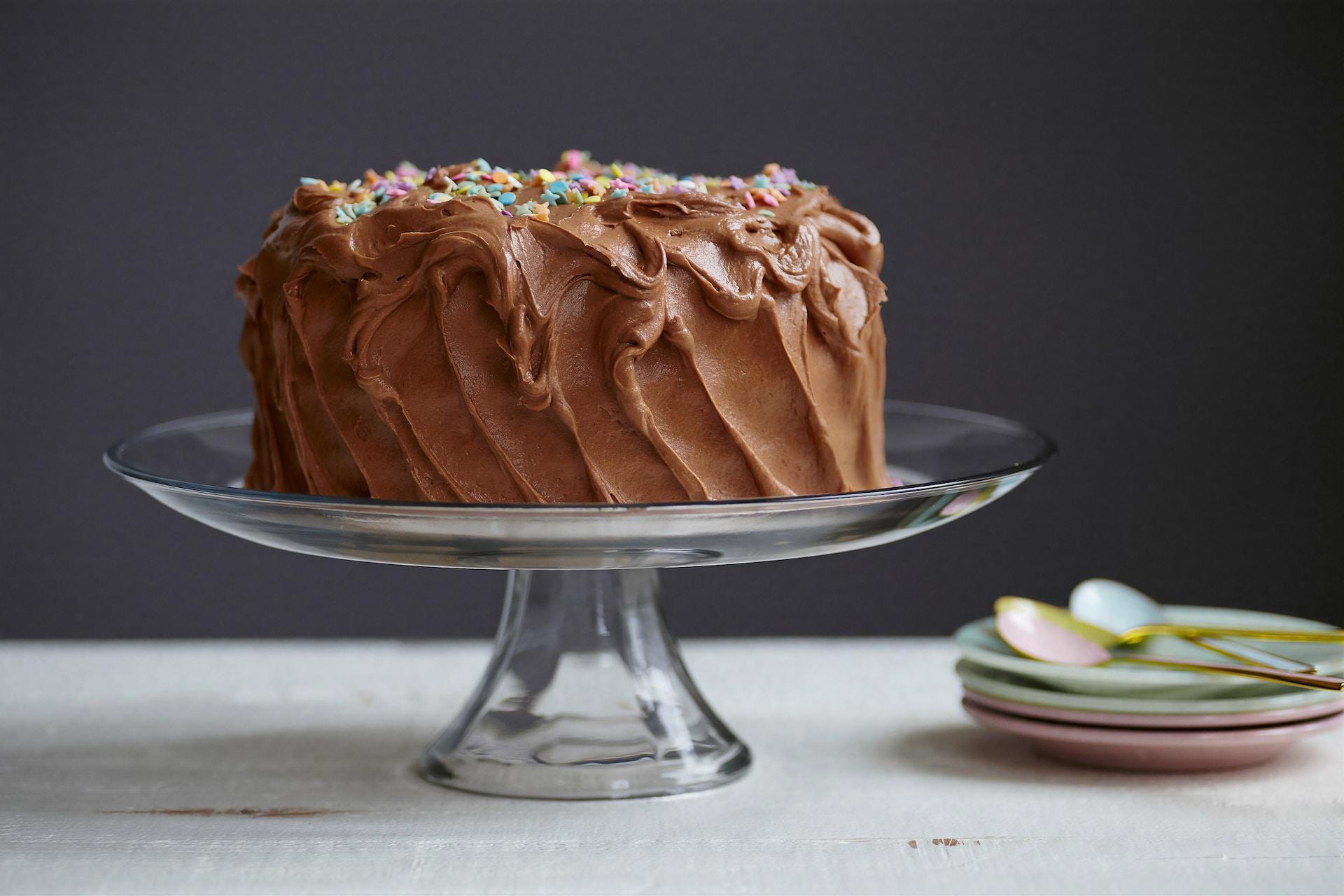
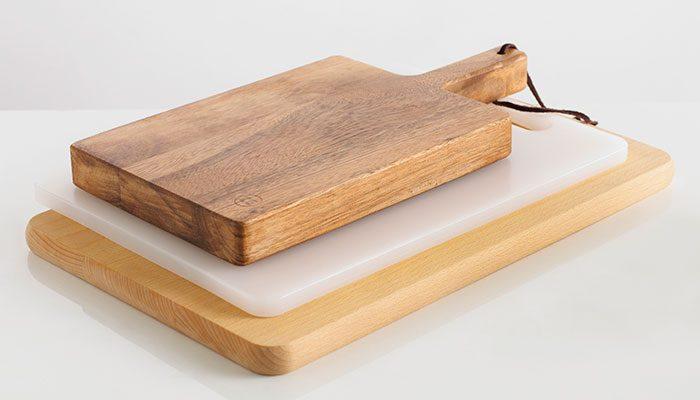
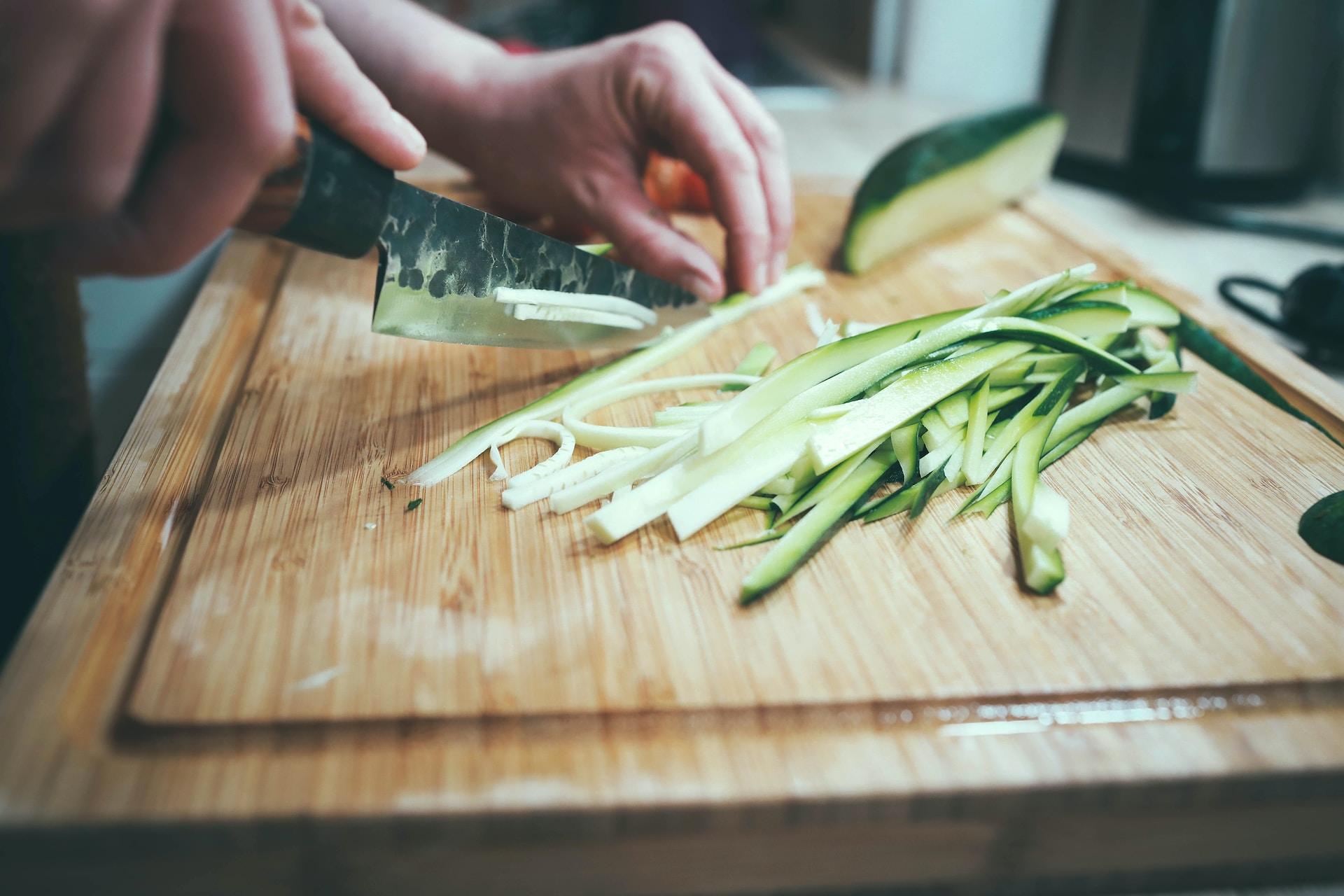
![Do You Have to Water Bath Pickles? [Stepwise Guide!]](https://kitchenbarrels.com/wp-content/uploads/2023/01/Do-You-Water-Bath-Pickles.jpg)

